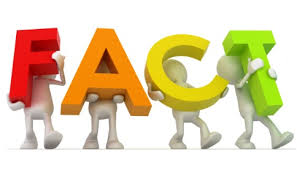Lesson 1: Clinical Disorders - Part A
Introduction
In the lesson content you will come across some terms in maroon color that are bolded. Look them up in the course Glossary.
Mental disorders are illnesses that involve the brain. Because of this, the way people think and behave are affected to varying degrees. People who have mental disorders find that their sense of well-being has been compromised. They may have problems both at home and at work. A combination of genetics, environment, social factors, cultural factors, and physical health work together to make us who we are at any given time. Thankfully, many disorders can be treated effectively – with patients leading full lives after treatment.
Mental disorders are associated with disturbances in six primary domains of brain function.
Figure 1: Mental Disorders
When the brain is not functioning properly in one or more of its six domains, and a person experiences problems that interfere with his or her life in a significant way, they may have a mental disorder. (Note: signaling means being responsive and reacting to the environment.) However, it is important to note that not all disturbances of brain functioning are mental disorders. Some can be a normal or expected response to the environment -- for example: grief when somebody dies or acute worry, sleep problems and emotional tension when faced with a natural disaster such as a hurricane.
What is the difference between mental distress and mental disorders?
| Distress | VS.
|
Disorders |
|
Common; caused by a problem or event; usually not severe (may be severe); usually short lasting ; professional help not usually needed; professional help can be useful; DIAGNOSIS NOT NEEDED. |
Less common; may happen without any stress; often with high severity; usually long lasting; professional help usually needed. NEEDS TO BE DIAGNOSED. |
What causes mental illness?
A variety of different insults to the brain can lead to mental illness. Basically there are TWO major causes that can be independent or can interact. They are
|
GENETICS (the effect of genes on brain development and brain function) and ENVIRONMENT (the effect of things outside the brain on the brain -- such as infection; malnutrition; severe stress etc.) |
|
|
|
Although mental illness may be classified in various ways, for the purpose of this course, mental disorders shall be divided into four broad categories, each of which can be divided into many sub-categories.
Please see Figure 2.
Figure 2: Mental Disorders
Clinical Disorders
Applying the categorization scheme in Figure 2 more than 12 broad sub-groups can be ascribed to the main category of clinical disorders. The first sub-group is anxiety disorders that include such conditions as panic disorder, post-traumatic stress disorder (PTSD), obsessive compulsive disorder (OCD), generalized anxiety disorder (GAD), phobias, and more. The second sub-group relates to adjustment disorders and the third, dissociative disorders. The fourth sub-group deals with eating disorders such as pica, anorexia nervosa, and bulimia nervosa. The fifth sub-group deals with factitious disorder. The remaining sub-groups deal with impulse control (e.g., kleptomania, trichotillomania, pyromania), mood disorders (e.g., depression, bipolar disorder, dysthymic disorder) schizophrenia and psychosis, sleep disorders, sexual and gender identity disorders, somatoform disorders, and substance-related disorders. This course will describe only a small fraction of the various clinical disorders.
